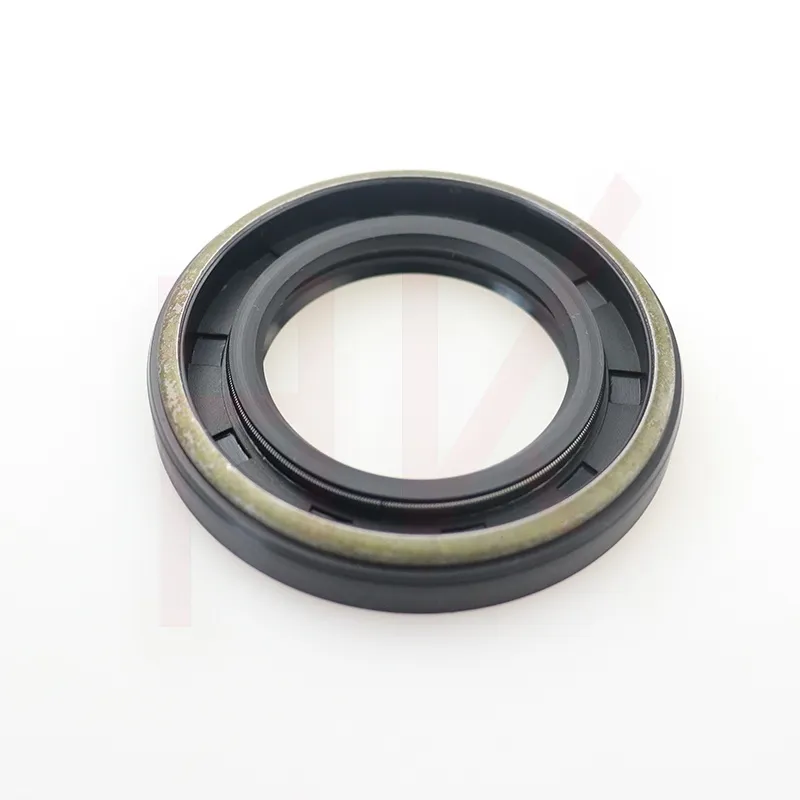10 月 . 21, 2024 13:22 Back to list
Understanding the Function and Importance of Cylinder Oil Seals in Engine Performance
Understanding Cylinder Oil Seals Their Importance and Functionality
Cylinder oil seals, often referred to simply as oil seals or shaft seals, are crucial components in various machinery and engines. Their primary role is to prevent the leakage of lubricants, such as oil, from the engine or machinery while simultaneously keeping contaminants such as dust, dirt, and moisture out. This protective function is essential for maintaining the efficiency, durability, and reliability of engines and complex machinery.
Structure and Composition
Oil seals are typically made from rubber, silicone, or other elastomeric materials designed to withstand high temperatures and pressures. Their basic structure consists of a circular ring with a lip that presses against the shaft, creating a tight seal. The sealing lip is often spring-loaded, which helps to maintain contact with the shaft as it rotates, thereby enhancing the seal's effectiveness and lifespan.
Different applications require different types of oil seals, which can vary in size, material, and design. For example, oil seals used in automotive engines are often designed to resist thermal degradation and enhance elasticity. In contrast, those used in industrial machinery might focus on resisting harsh chemical environments or extreme pressure.
Importance in Engine Performance
The significance of cylinder oil seals in engine performance cannot be overstated. They prevent oil leaks that, if left unchecked, could lead to significant operational issues. An oil leak not only wastes valuable lubricant but can also lead to increased friction and wear on engine components, resulting in reduced efficiency and potential engine failure.
cylinder oil seal

Moreover, oil seals serve to maintain the necessary oil pressure within the engine. A drop in oil pressure can affect lubrication, leading to overheating and potential damage. Therefore, maintaining the integrity of the cylinder oil seals is crucial for optimal engine performance and longevity.
Signs of Wear and Replacement
Over time, oil seals can wear, become brittle, or suffer from deformation due to constant contact with the shaft or exposure to extreme temperatures. Common signs of a failing oil seal include visible oil leaks, a noticeable decrease in oil levels, and in some cases, unusual noises from the engine. Regular maintenance checks can help identify these issues before they result in more severe damage.
Replacing a worn or damaged oil seal is a relatively straightforward process for mechanics, but it is crucial to follow the correct procedures to ensure a proper fit and seal. Incorrect installation can lead to further leaks and exacerbate existing problems. Therefore, choosing high-quality replacement seals designed for the specific application is vital.
Conclusion
Understanding the functionality and importance of cylinder oil seals is essential for anyone involved in machinery operation or maintenance. These seemingly small components play a significant role in preventing leaks, maintaining oil pressure, and ensuring the longevity of engines and machinery. Regular inspection and timely replacement of worn oil seals are critical practices that contribute to the overall efficiency and reliability of equipment. Whether in automotive applications or industrial machinery, the health of the oil seal is a key factor in optimal operational performance. Regular maintenance and adherence to best practices can help prevent costly repairs and ensure smooth operation for years to come.
-
The Power of Advanced Sealing: High-Pressure Solutions for Modern Machinery
NewsOct.29,2024
-
Optimizing Machinery with High-Performance Oil Seals
NewsOct.29,2024
-
Maximizing Machinery Efficiency with Advanced Oil Seals
NewsOct.29,2024
-
Ensuring Equipment Longevity with Quality Oil Seals
NewsOct.29,2024
-
Enhance Equipment Performance with Quality Oil Seals
NewsOct.29,2024
-
Custom Oil Seals for Specialized Machinery Needs
NewsOct.29,2024
-
The Role of Wiper Seals in Dust Sealing and Oil Protection
NewsOct.20,2024
Products categories
















